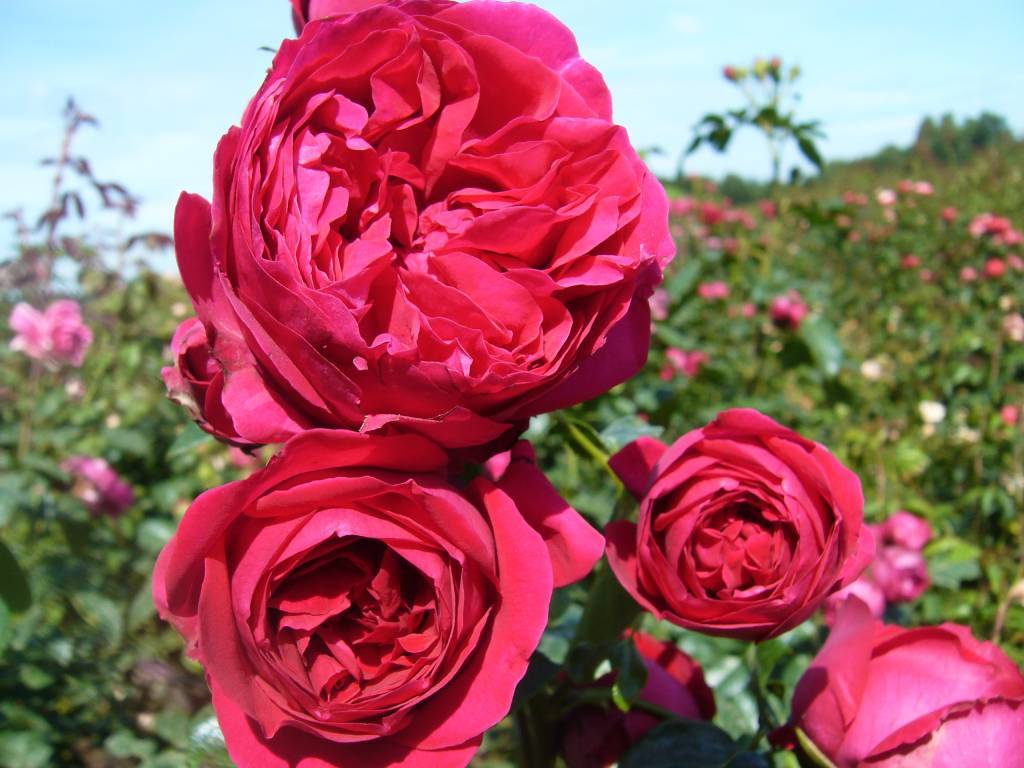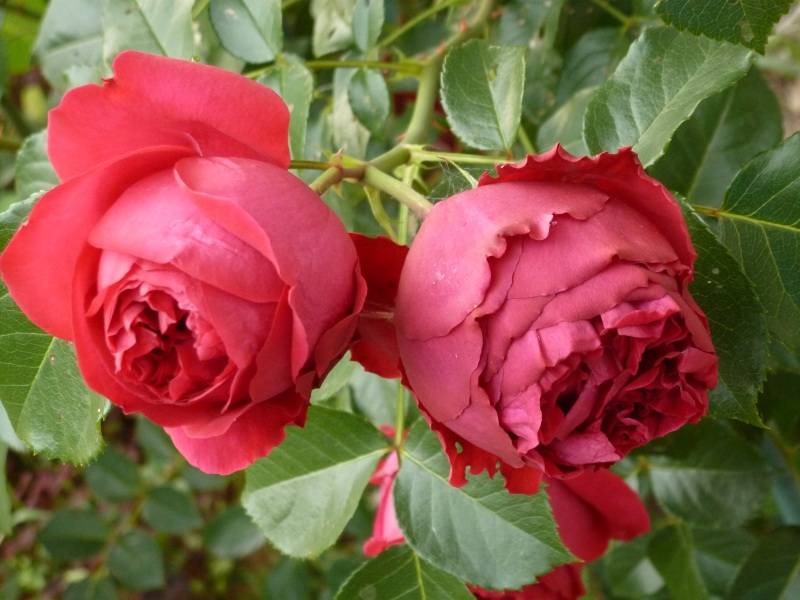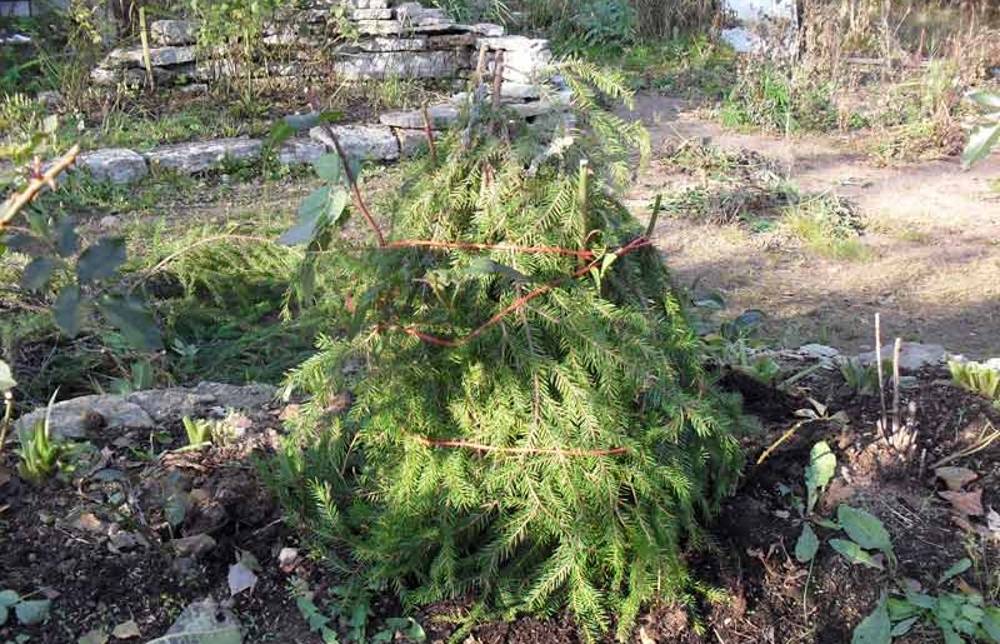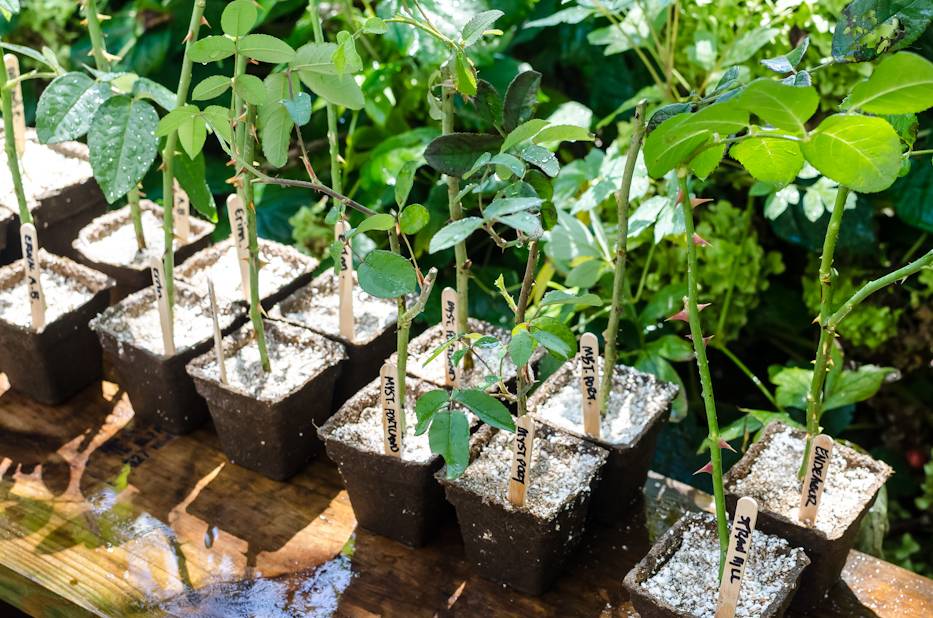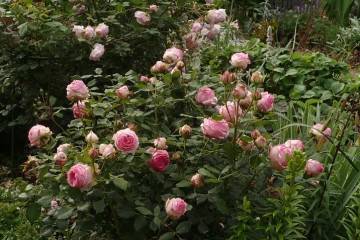Rose Eric Tabarly - characteristics of the variety
Content:
Climbing rose Eric Taberly with large and fragrant crimson flowers looks great next to any support, even in a single planting. It is traditionally planted along fences, near the walls of houses and trellises.
Rose Eric Tabarly - what is this variety, history of creation
The variety was bred in 2002 in France by the famous breeder Aylan Meyer. In 2004, he gained fame and popularity in the United States. In 2006 he was awarded the prestigious Los Angeles Society award.
Brief description, characteristic
Climbing rose Eric Taberly is capable of stretching up to 1.5 m in height, but it is not grown as a scrub. The stems are creeping, arched, whip-like, and when tying up, they willingly take an upward direction. The foliage is dense green without shine. Flowers up to 10 cm in diameter. The petals are crimson. Aroma of medium persistence. Winter hardiness within -23 ° C.
Advantages and disadvantages of the variety
Among the advantages of the variety:
- high size of flowers - up to 10 cm in diameter;
- re-flowering variety;
- in the cut costs 7 days or more;
- high whips;
- high resistance to powdery mildew and black spot.
Of the minuses, they note:
- sensitive to cold damp weather .;
- low resistance to drought;
- lashes are difficult to bend to the ground for shelter for the winter.
Use in landscape design
The bushes are planted singly and in large groups at the supports. Suitable for dense and tall hedges. Rose Eric Taberly is used to decorate fences, gazebos, walls of buildings, and is also often planted under windows.
Growing a flower, how to plant it in open ground
The choice of a place for planting seedlings cannot be random, since the requirements of agricultural technology for the variety are quite strict. A climbing hybrid rose can only be propagated by cuttings, seedlings and cuttings, but not by seeds.
The best results were shown by spring planting from April to May, as well as autumn planting in September. In the first case, flowering will be delayed for 2-3 weeks.
The place for planting is chosen so that the bushes receive protection from the midday sun and strong winds. The rose should not get water from roof drains. Better to plant in partial shade than in the sun.
The soil is required fertile, light and loose. The optimal pH value is 5.6-6.5. You can add rotted manure and peat for acidification, and sand and wood ash for looseness.
Planting procedure step by step
Plant a rose like this:
- A hole is dug 60x60 cm and the same depth.
- A thin layer of drainage is poured onto the bottom.
- The removed soil is mixed with humus by a quarter.
- A bush is planted without deepening the root collar.
Finally, water and mulch.
Plant care
In warm regions, the variety does not show itself to be capricious, and in mid-latitudes it will require a lot of care.
Watering rules and humidity
The bush should not be sprinkled, as this is fraught with the appearance of fungal diseases.Watering is carried out twice a week at the root. In August, watering is less frequent - once a week. In September, watering is stopped.
Top dressing and soil quality
Fertilizers are applied 1-2 times a month. In the spring - nitrogen nitrate (30 g per 10 liters of water). During flowering, they are fed with potassium-phosphorus fertilizers. In the fall, humus is poured under the roots.
Pruning and replanting
In the spring, the bushes are cut by a third, removing dry and diseased branches. Once every 5 years, they are pruned, leaving only 30-40 cm, performing rejuvenation of the bush. Sanitary pruning is performed in autumn.
Features of wintering a flower
In the northern regions in the open field, the Eric Taberly variety does not winter. In middle latitudes, a shelter is required with hilling soil and stretching agrotextiles over the crown or spruce branches.
Blooming rose
Annual shoots at the ends form clusters of 3-5 buds. Corollas open on average 8-10 cm across. The lush flower consists of 100 petals with a pleasant scent of crimson tones with a burgundy tint.
Most often, the variety blooms closer to mid-summer and does not stop flowering for 2 months. In the south, the buds can bloom in June, then there is a pause in July and re-flowering resumes in August.
Care during and after flowering
In the first year, it is recommended to remove the buds so that the bush grows strong roots and shoots. From the second year, during flowering, all wilted buds are removed, preventing the seeds from ripening.
What to do if it does not bloom, possible reasons
The lack of buds indicates depletion of the soil. In this case, top dressing is required. The second reason is the aging of the bush, which requires spring rejuvenating pruning.
Flower propagation
The bush available on the site can be propagated by cuttings or layering. It cannot be propagated by seeds, since it is a hybrid.
The peculiarity of the variety is that the cuttings are harvested after flowering. This usually happens in late summer, early September.
Since the cuttings are cut closer to autumn, they are rooted in greenhouse conditions. Shoots 12-14 cm long are buried in loose soil and covered with a transparent cap. Until next spring, they are kept at a temperature of + 15-17 ° C.
Diseases, pests and ways to control them
Although the variety is considered quite delicate, its disease resistance is high with proper agricultural technology. The main thing is not to plant the bushes too closely, but to carry out pruning every year in spring and autumn. For prevention, the bushes are sprayed in the spring with a solution of Bordeaux liquid, in the summer with "Aktara" or "Fitoverm" from pests, repeating the prevention in the fall.
In general, even for a beginner, the Eric Taberly variety will not present unpleasant surprises. With proper planting and regular watering, dressing and pruning, it will bloom profusely every year for more than a dozen years in a row.
